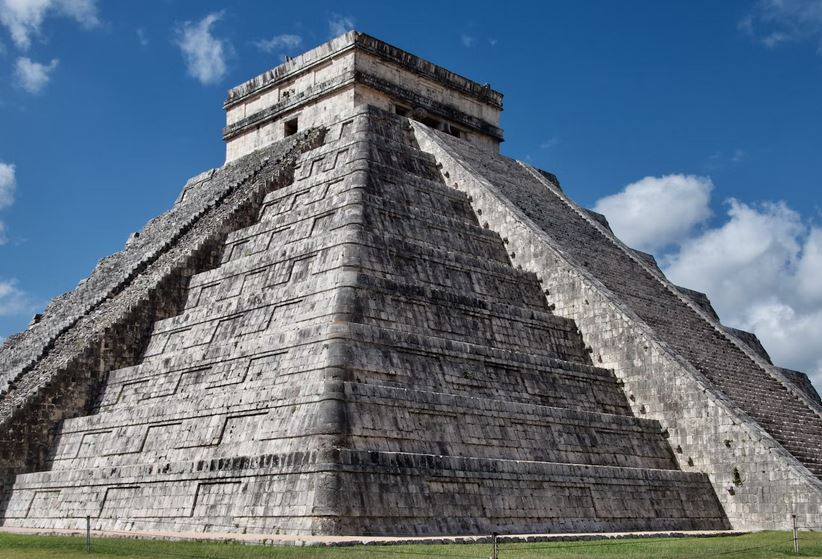Facts About the Mayan Civilization: Mysteries of the Ancient World |

|
|
Photo by: Raquel Moss |
|
More Ancient Facts: The Mayan civilization, which flourished in Mesoamerica for thousands of years, is renowned for its sophisticated achievements in mathematics, astronomy, art, and architecture. From their towering pyramids to their intricate writing system, the Maya left an indelible mark on history. Here are 12 fascinating facts that offer a glimpse into their remarkable world. They Had a Highly Advanced Writing SystemThe Maya developed a complex hieroglyphic writing system, one of the most sophisticated in the ancient Americas. They used it to record historical events, religious beliefs, astronomical observations, and more on stelae, codices, and pottery. Their Calendar Was Remarkably AccurateThe Mayan calendar system was incredibly precise, incorporating multiple cycles, including the 365-day Haab' (solar year) and the 260-day Tzolkin (ritual calendar). Their understanding of astronomy allowed them to calculate the solar year with remarkable accuracy, as noted by resources like the Science journal in studies of their astronomical knowledge. They Developed the Concept of ZeroLong before Europeans, the Maya independently developed the mathematical concept of zero. They used it in their place-value numeral system, which allowed them to perform complex calculations. Their Cities Were Impressive Architectural FeatsMayan cities like Chichen Itza and Tikal featured monumental architecture, including towering pyramids, intricate palaces, and astronomical observatories. These structures demonstrate a high level of engineering and artistic skill. They Were Skilled AstronomersAstronomy played a crucial role in Mayan society and religion. They meticulously observed the movements of the sun, moon, planets, and stars, using this knowledge to develop their calendar and plan agricultural cycles, as detailed by the Royal Museums Greenwich. They Practiced Ritual BloodlettingBloodletting was a significant ritual in Mayan society, performed by rulers and other elites to communicate with the gods and maintain cosmic order. This practice is well-documented in Mayan art and hieroglyphic texts. They Had a Complex Social HierarchyMayan society was highly stratified, with a ruling class of kings and nobles, followed by priests, warriors, artisans, and farmers. Social status was largely hereditary. They Developed Sophisticated Agricultural TechniquesTo support their large population, the Maya employed various sophisticated agricultural techniques, including raised fields, terracing, and the management of water resources, as discussed by researchers at institutions like the University of Arizona. Their Ballgame Had Religious SignificanceThe Maya played a ritual ballgame, similar to that of the Aztecs, with religious and political implications. The game, played with a solid rubber ball, could sometimes involve the sacrifice of the losing team's captain. The "Collapse" Was a Complex ProcessThe "Mayan collapse," which occurred in the Terminal Classic period (around 800-1000 AD), was not a sudden event but a gradual decline in some areas, with other Mayan cities continuing to thrive. The reasons for this decline are complex and likely involved a combination of factors, including environmental changes, warfare, and social unrest, as explored by National Geographic. They Built Extensive Road NetworksThe Maya constructed extensive networks of raised stone causeways, known as *sacbeob*, which connected cities and ceremonial centers. These roads facilitated trade and communication across their territories. Their Descendants Still Exist TodayContrary to popular belief, the Mayan civilization did not disappear. Millions of Maya people still live in Mexico and Central America today, preserving many aspects of their ancestral culture and speaking various Mayan languages. The Mayan civilization's remarkable achievements continue to inspire awe and study. These facts offer a glimpse into their sophisticated society and their enduring legacy in the ancient world. Mayan Civilization FAQsSome more questions about the Mayan Civilization! Where did the Mayan civilization primarily exist?The Mayan civilization flourished in a region spanning southeastern Mexico, all of Guatemala and Belize, and the western parts of Honduras and El Salvador. Are the Maya people still around today?Yes, millions of Maya people still live in Mexico and Central America today. They maintain many aspects of their ancestral cultures and speak various Mayan languages. What were some of the major achievements of the Mayan civilization?The Maya are known for their advanced writing system, their remarkably accurate calendar, their development of the concept of zero, and their impressive architecture and astronomical knowledge. What caused the Mayan civilization to collapse?The "Mayan collapse" was a complex process that likely involved a combination of factors, including environmental changes, prolonged droughts, warfare between city-states, and social unrest, as discussed by sources like National Geographic. What was the significance of astronomy to the Maya?Astronomy was deeply intertwined with Mayan religion and their calendar system. They meticulously observed celestial bodies to track time, predict agricultural cycles, and understand their cosmology, as highlighted by the Royal Museums Greenwich. |